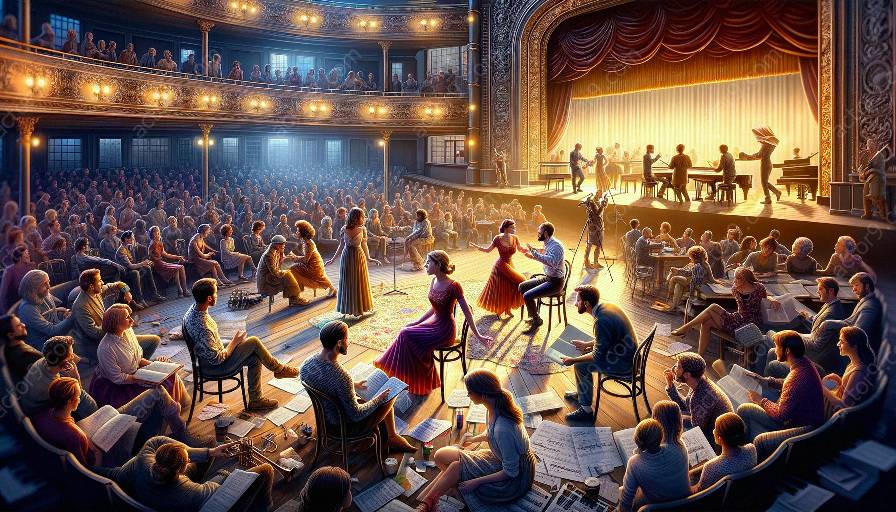Adapting existing works through collaborative processes in musical theatre presents a unique set of challenges that impact the creative process and the final production. Collaboration is a fundamental aspect of musical theatre, requiring the synchronization of various artistic elements to convey a cohesive and impactful story. In this comprehensive exploration, we delve into the difficulties faced when adapting existing works in the context of musical theatre collaboration.
The Role of Collaboration in Musical Theatre
Before delving into the challenges, it's essential to understand the significance of collaboration in musical theatre. Musical theatre production involves a multidisciplinary team, including writers, composers, directors, choreographers, designers, and performers. Each member contributes their expertise to create a harmonious blend of music, dance, and storytelling. Collaboration is the linchpin that binds these diverse talents, ensuring a seamless integration of creative elements.
Challenges Faced in Adapting Existing Works
1. Preserving the Essence of the Original Work
One of the primary challenges in adapting existing works is preserving the essence and integrity of the original material. Whether it's a classic novel, a film, or a play, the creative team must navigate the delicate balance between honoring the source material and making necessary adaptations for the musical theatre format. This requires a deep understanding of the original work's themes, characters, and narrative, as well as the ability to translate these elements effectively into a musical context.
2. Synchronizing Music and Narrative
Integrating music with the narrative poses a significant challenge in the collaborative process. The music composition and arrangement need to complement and enhance the storytelling without overshadowing the dialogue or plot development. This calls for close coordination between the composer, lyricist, director, and choreographer to ensure a seamless fusion of music and narrative.
3. Balancing Creative Input
Collaborative processes often involve multiple creative voices, each offering unique perspectives and ideas. Balancing these inputs while maintaining a cohesive vision for the adaptation can be challenging. Conflict resolution and compromise are essential to navigate differing artistic viewpoints and ensure that the final product reflects a unified creative vision.
4. Licensing and Rights Issues
Another practical challenge in adapting existing works is navigating licensing and rights issues. Securing the necessary permissions and rights to adapt a pre-existing work for musical theatre can be a complex and lengthy process. Legal considerations and negotiations add a layer of complexity to the collaborative endeavor, requiring clear communication and legal expertise.
Impacts on the Final Production
The challenges of adapting existing works through collaborative processes have a direct impact on the final production. When successfully navigated, these challenges contribute to the creation of a compelling and engaging musical theatre experience. However, when overlooked or mishandled, they can diminish the quality and coherence of the production, affecting the audience's reception and critical acclaim.
Enhancing Creativity and Innovation
Despite the challenges, collaborative adaptation processes also present opportunities for creativity and innovation. The collective efforts of the creative team can lead to inventive interpretations of the original material, introducing fresh perspectives and artistic approaches that enrich the musical theatre landscape.
Conclusion
Adapting existing works through collaborative processes in musical theatre is a complex and demanding undertaking, requiring astute navigation of artistic, logistical, and legal challenges. Collaboration lies at the heart of this endeavor, shaping the creative process and ultimately defining the success of the final production. By acknowledging and addressing the challenges inherent in this process, creative teams can harness the power of collaboration to breathe new life into familiar stories and captivate audiences with the magic of musical theatre.




































